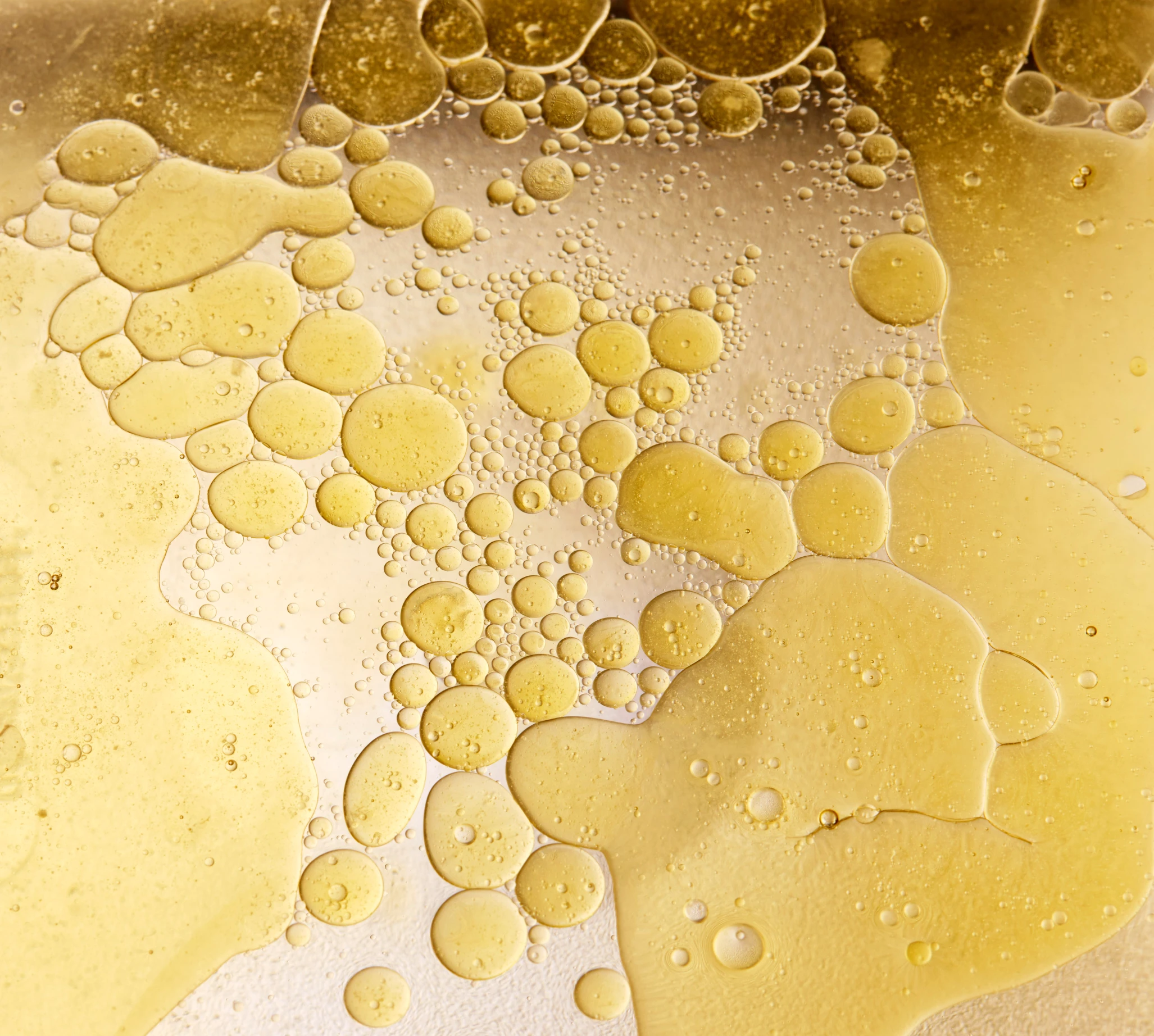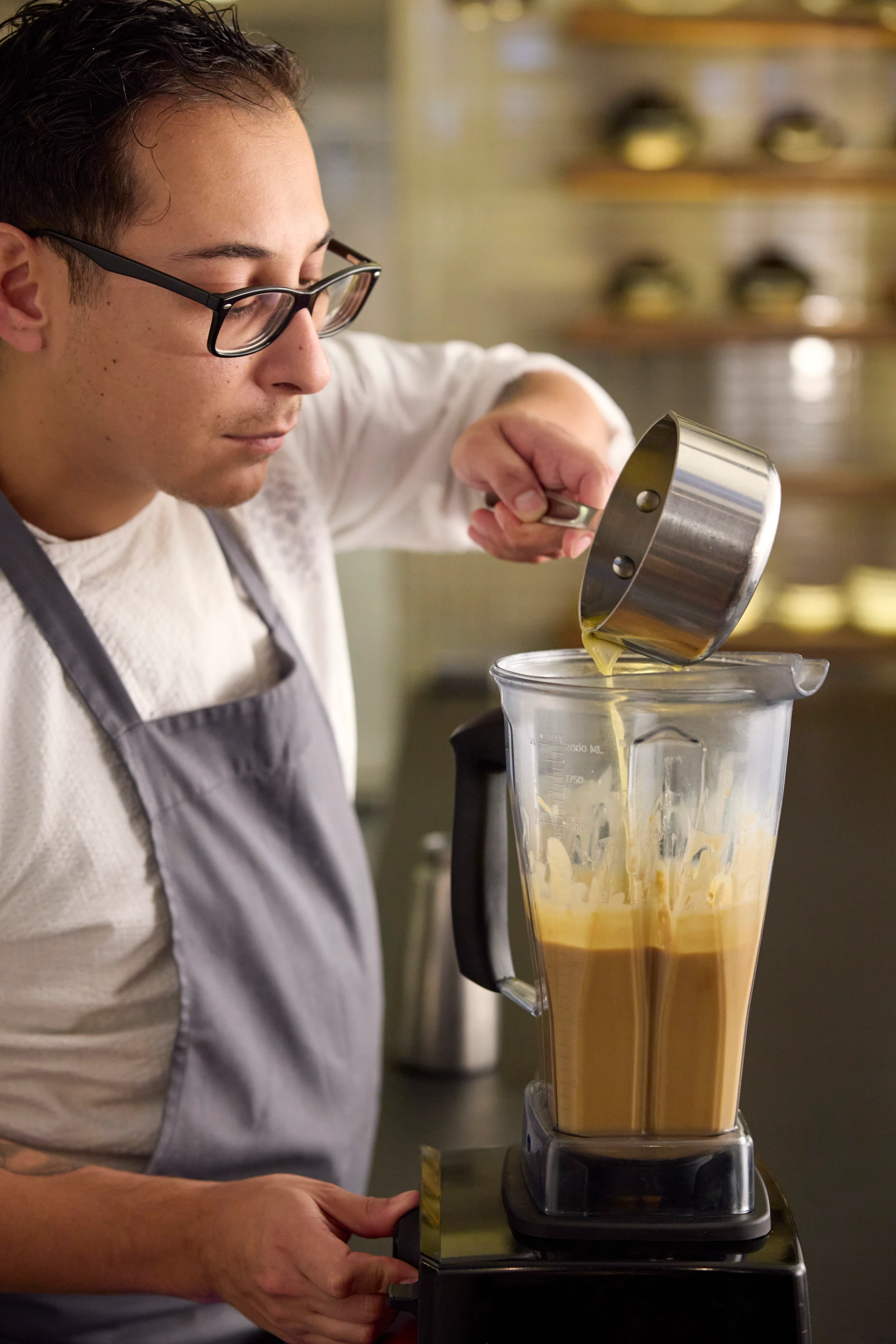We live in a world abundant in certain resources, yet we remain dependent on a food system that takes more than it gives. Agriculture requires seven to ten times more caloric energy than it produces, which has led to nearly half of the planet’s habitable land being cleared for farming[1]. This imbalance will only continue to deepen biodiversity loss as our population climbs[2]. And yet, we aren’t limited by what our planet can provide, but by what we can imagine is possible. Amid this scarcity, Earth still offers overflowing abundance. We just need to harness it.
We’re surrounded by energy in the form of carbon-based molecules. It’s the same energy that gave rise to the first life on Earth billions of years ago, and it holds every bit as much potential today as it did then. Our product development team is tapping into this ancient chemistry by recreating the heat and pressure conditions to produce the fats that anchor our food system.
Our process for creating fats begins with carbon dioxide or methane in the form of solid wax. These waxes are extremely energy-dense, but the energy isn’t yet available for human digestion. This is the fundamental challenge that Savor’s science solves. We make this energy accessible through a multistep thermochemical process that transforms the waxes into fatty acids packed with bioavailable energy. Our product development team then crafts the fatty acids into different triglyceride formulations that become the recipes for Savor fats ranging from beef tallow to vegetable oil.

Creating fats from scratch this way enables us to do more with less. We can deliver functional performance tailored to virtually any application—from butter that’s the backbone of flaky croissants to beef tallow that adds richness to baked dishes to the cocoa butter in creamy desserts. Our fats replicate the best attributes of their conventional counterparts, with adjustments to taste, texture, and melting profile for each use case. So, whether a fat is destined for fresh baked goods or shelf-stable snacks, we can fully customize it to elevate the end product.
“Every time we develop a new fat, we add it to our library of knowledge that tells us how each detail of its composition will affect its properties,” explains Nik Lazouski, Savor’s Chief Science Officer. “Each successive fat makes it easier for us to develop new, high-performing fats or adjust existing recipes for different applications.”
The development momentum that grows as our portfolio expands is one of the most powerful elements of our platform. Savor scientists spent more than two years honing each step of our process before our butter ever found its way to a chef’s frying pan. This pre-work ensured the overall sequence could be successfully replicated, regardless of what kind of fat is being produced. This foundation opens the door to expansive product development as our business and product development teams work in tandem to identify, iterate, and create new fats and oils.

We started out by creating the milkfats that make up butter to establish our technology platform with a particularly complex fat. As it turns out, these buttery beginnings not only proved out the effectiveness of our process, but they also led to crucial insights for the development of successive products.
“We found that tempering our milkfat led to a more desirable butter texture, which is key to our development of confectionary fats like cocoa butter,” says Sydney Schreppler, Savor’s Director of Product and R&D. “We also learned from the interaction between melting behavior and viscosity, which helps us achieve ideal texture and mouthfeel with cooking oils and lard and find the best way to incorporate them into different foods.”
With each fat our product development team creates, we gather as much data as possible to find correlations between chemical makeup and culinary experience. So, whether we’re looking at how smoothly butter spreads on bread or how cocoa butter affects chocolate’s snap and smooth gloss, we can pinpoint changes to our formulations to tailor a fat to highly specific applications.

To feed the world without consuming our planet, massive scalability is a must. With this in mind, we optimized our process to scale from the get-go. This ability to go big empowers our team to find the greatest potential for climate impact and pursue the boldest solutions possible. We’re aiming to maximize impact by focusing on replacing the most common and harmful fats and oils over the coming decade with sustainable alternatives that deliver the same pleasure and performance at commodity prices. To date, we’ve created prototype replacements for milkfat, cocoa butter, palm oil, lard and tallow among other specialized fats. Continued product development will build on this first taste of transformative fats with a full suite of products that harnesses abundance to reshape our food system for the good of both people and planet.

